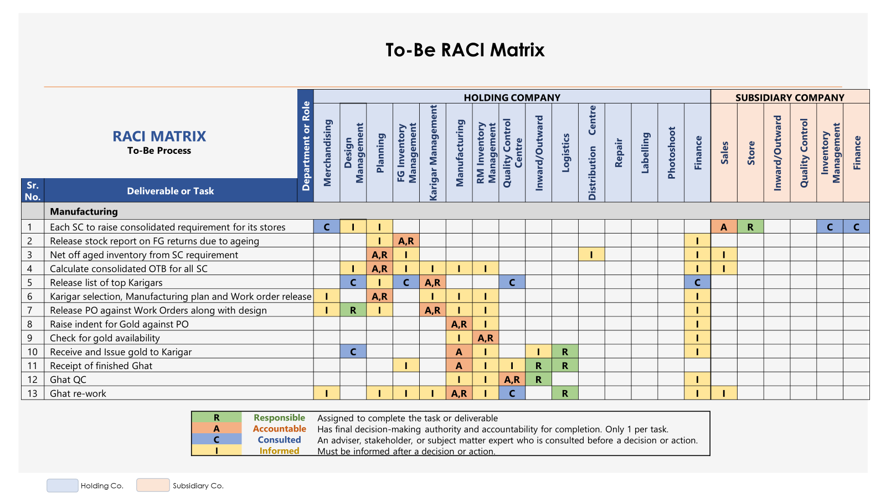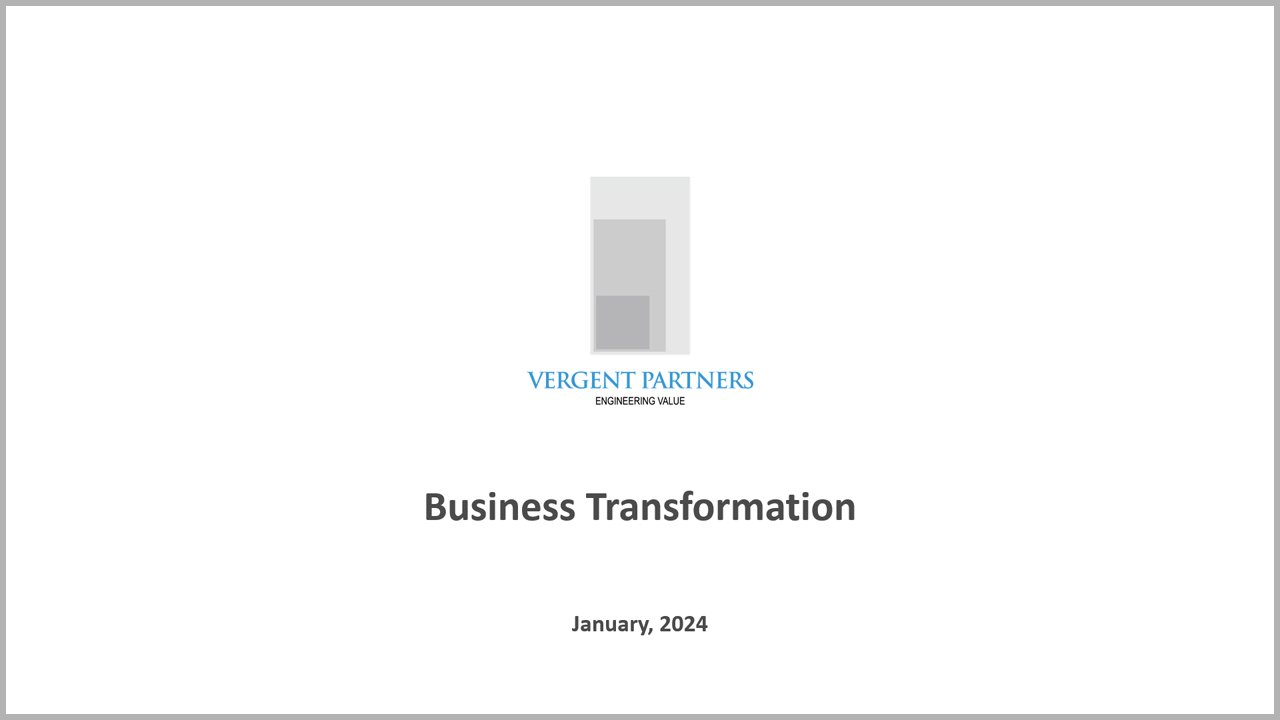Business Transformation
Introduction:
Objectives of Business Transformation:
Enhanced Competitiveness
Revenue Expansion
Cost Reduction & Profitability Expansion
Increased Efficiency & Productivity
Customer Centricity
Innovation & Agility
Risk Management
Talent Development & Engagement
Sustainability
Business Transformation creates value along three axes.
De-risking:
Identification of process bottlenecks & risks
Single source of truth
Real-time data & reporting mechanisms
Clear assignment of roles & responsibilities
Reduced manual interventions that are
prone to errors or disruptions
Compliance
Scalability:
Reduction in complexity
Process Standardisation
Automation
Data based decision-making
Talent Management
Profit Expansion:
Streamlined processes & elimination of unnecessary steps result in quicker turnaround times, reducing costs & increasing productivity.
Working Capital Management & Resource Optimisation.
Transformation is essential for businesses to remain competitive.
Drivers for Business Transformation:
Business transformation creates competitive advantages & promotes sustainable growth.
Our Approach:
Technology & solutions that complement existing capabilities – with an eye out for the future
Staged implementation
A well-planned transformation trajectory optimises resources and minimises disruption while laying the necessary foundation for scale.
Implementation:
Business Process Reengineering
This requires a review of existing operations and the identification of inefficiencies and fatal flaws. This is followed by the recasting of all processes with the objective of optimising cycle times, costs — and address risks. This process dovetails into ERP implementation and significantly optimises process design.
Process
Outcome
RACI:
A RACI matrix defines roles and responsibilities by clearly identifying who is (R)esponsible, (A)ccountable, (C)onsulted, and (I)nformed for every process that has been planned. This helps in effective decision making, delegation and workflow automation.
The RACI Matrix
ERP:
SAP Business One is designed to support mid-sized companies allowing them to control and optimise their operations.
SAP implementation consolidates data across all core processes into a single database allowing for a “single source of truth” across the organisation.
Real-time information allows timely & informed decision-making. It also allows automation of routine tasks and workflows, reducing manual effort, minimising errors and accelerating outcomes.
It is also flexible - Application layers for specific business processes & functions, including CRM, HRMS etc. can be added as per business requirements.
Digital Infrastructure:
Information Technology is central to competitiveness against larger companies that enjoy economies of scale.
Infrastructure accelerates digital transformation by providing the essential technological foundations for rapidly adopting & integrated advanced technologies, automating processes, enhancing collaborations and responding to market trends.
Good cybersecurity infrastructure protects the company against threats, and ensures data integrity & business continuity.
Business Analytics:
Analytics help businesses gain competitive advantage by allowing faster data-driven decisions, improving efficiencies, tracking customer experiences, improving product & portfolio management.
Interactive dashboards and visualisation present data in a user-friendly format, allowing self-service.
Analytics provide insights that are critical to effective planning.
Key Metrics
Data Based Decisioning Matrix:
Systematic analysis & evaluation of relevant data for objective decision making rather than subjective opinions. It is critical for effective delegation.
Workflow Automation:
Workflow automation streamlines the movement of tasks, documents, and data within work processes by automating along predetermined guidelines thereby increasing efficiency, accuracy and dramatically reducing manual intervention allowing for a smaller effective workforce.
Business Transformation Agenda:
Transformation powers comprehensive and enduring organisational change.
Related Reading:



















SMEs contribute to over 30% of India’s GDP, 45% of industrial production, 40% of export and employ over a 100 million. SMEs face significant challenges on account of their size.